Hermits

introduction
Only New England could have produced a cookie with the visual austerity of a hermit. But hermits never had to rely on their looks. Their pedigree is as solid as those families who came over on the Mayflower. A hermit seeks to please modestly—with spice, chew, a crusty edge, rich molasses flavor, and a currant or two. If left unattended, a hermit will last indefinitely.
We created an old-fashioned hermit recipe. No ground or candied ginger enters the formula (ginger was not a spice historically associated with hermits). And there is no creaming required—no mixer, no fuss. The candied citron join currants in our version because its flavor and texture are unusually compatible with others in this cookie. And because the dough is not overly sweet, the simple icing offers both visual and experiential enhancement.
Baking Notes
If your citron is not finely minced like the one we recommend from Frank and Sal, dice it into fine cubes.
Gauging the doneness of this cookie is tricky. Look for fissures along the surface and a slight dip in the architecture of the loaves. If baked just right, the hermits will have a firm top and bottom surface and a chewy interior.
equipment mise en place
For this recipe, you will need a digital kitchen scale, a small saucepan, a silicone spatula, two small bowls, a whisk, a large bowl, a wooden spoon, parchment paper, a plastic dough scraper, a small metal spatula, a baking sheet, a wire cooling rack, and a serrated knife.
-
for the cookies:
-
2ounces unsalted European-style butter
-
1.8ounces light molasses
-
2.2ounces dark brown sugar
-
¾teaspoon ground cinnamon
-
⅜teaspoon ground nutmeg
-
⅜teaspoon ground mace
-
⅛teaspoon ground cloves
-
1large egg
-
6.5
-
½teaspoon baking powder
-
½teaspoon baking soda
-
Scant ½ teaspoon fine sea salt
-
1ounce finely diced citron (see Baking Notes)
-
0.8ounces currants
-
-
for the icing:
-
1¾ounces confectioners’ sugar
-
2teaspoons whole milk
-
⅛teaspoon vanilla extract
-
-
Make the cookies: In a small saucepan, combine the butter, molasses, brown sugar, cinnamon, nutmeg, mace, cloves, and salt. Warm the mixture over medium-low heat, stirring with a silicone spatula, until the butter has melted and the sugar has dissolved, about 3 minutes. Bring to a simmer over medium heat and cook, stirring constantly, for 5 seconds, then remove then pan from the heat and let cool for 5 minutes. Meanwhile, crack the egg into a small bowl, whisk it well, and weigh out 1 ounce into a second small bowl; discard the remainder or reserve for another use.
-
Whisk a bit of the hot butter-sugar mixture into the egg to temper it, then whisk the mixture back into the saucepan, scraping the bowl with the spatula; set aside.
-
In a large bowl, whisk together the flour, baking powder and baking soda. Add the citron and currants, then toss until evenly distributed and well coated with the flour. Pour the liquid ingredients into the dry, scraping the pan to get every drop, then stir briskly with a spatula or wooden spoon until well combined; the resulting dough will be quite soft and sticky. Let the dough rest, uncovered, for 15 minutes (fig. 3.1).
-
Cut two 9 by 6-inch pieces of parchment paper. With a plastic dough scraper, divide the dough in half (about 7.2 ounces each) and drop each half horizontally onto one of the parchment sheets, forming it into a rough log along the center of the sheet. Moisten your hands with water and shape each piece of dough into a 7-inch cylinder about 1 inch in diameter (fig. 4.1). Tightly roll up each cylinder in the parchment, using a small metal spatula to tidy the dough and push it back toward the beginning of the roll (fig. 4.2), then twist the ends of the paper like a candy wrapper (fig. 4.3). Refrigerate for at least 2 hours or up to overnight.
-
When you are ready to bake, adjust an oven rack to the middle position and heat the oven to 350 degrees. Line a rimmed baking sheet with parchment paper. Unwrap the dough logs and transfer them to the prepared baking sheet (fig. 5.1), spacing them about 2 inches apart. Bake until the the cylinders have broadened and formed fissures but still feel soft on top (fig. 5.2), about 20 minutes, rotating the baking sheet halfway through. Let cool on the baking sheet on a wire rack for about 5 minutes, then transfer the logs directly to the rack and let cool completely. Using a serrated knife, cut each log crosswise into 1½-inch sections.
-
Make and apply the icing: In a small bowl, whisk together the confectioners’ sugar, milk, and vanilla until the mixture forms a heavy glaze. Using a fork, drizzle the glaze onto the cookies; alternatively, use a parchment cone to pipe it on. Let the icing dry completely, about 20 minutes. The hermits will keep for up to 3 weeks in an airtight container at room temperature.
-
-
3.1
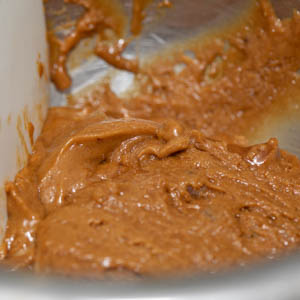
-
-
-
4.1
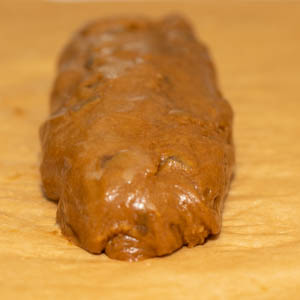
-
4.2
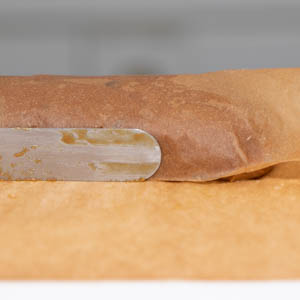
-
4.3
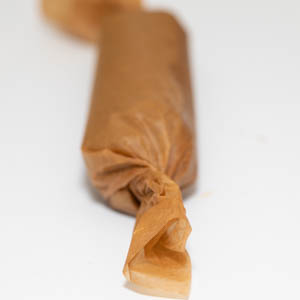
-
-
-
5.1
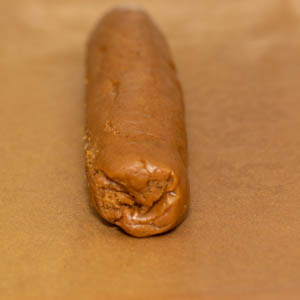
-
5.2
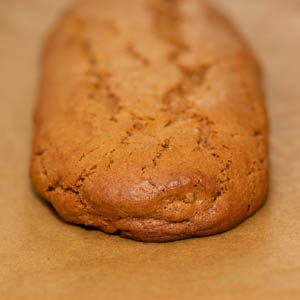
-